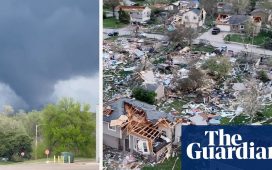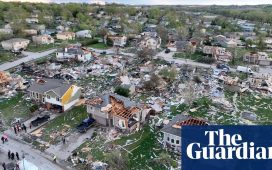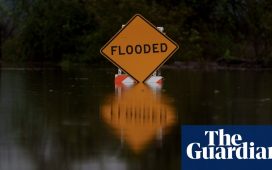April 8 will be your last opportunity to see a total solar eclipse in the contiguous United States or Canada until 2044. Mexico will have to wait even longer. But if clouds fill the sky as the moon passes between the sun and Earth, your shot at seeing the spectacle could be lost.
If you have an eclipse-viewing destination in mind, enter it in the box below to see average cloud cover in the past. The Times will provide forecast data closer to April 8.
Find your location’s historical cloud cover
Source: NASA Aqua/MODIS
Note: Average cloud fraction for the eight-day period spanning April 7 through April 14, for 2004 through 2023, as derived from satellite measurements taken at approximately 1:30 p.m. local time. Eclipse calculations are adapted from the Eclipse Explorer by Fred Espenak and Chris O’Byrne.
It’s still too early to know with much certainty what the weather will be like in your area that day — cloud forecasts aren’t reliable that far in advance. But the map of cloud coverage data above, derived from satellite measurements, gives the next best thing — a historical account of where the skies are more likely to be clear on that spring Monday.
The map shows the average cloudiness — the portion of the sky covered by clouds — for April 7 through April 14 for the past 20 years, using measurements collected by the MODIS instrument aboard NASA’s Aqua satellite.
This analysis shows that cloudiness tends to increase farther north along the path of totality, or the relatively thin strip of land where the moon will fully block the sun.
That could mean your best chance for clear skies is in Mexico, with about a 35 percent average chance of cloud cover. For those in the United States, Texas has the lowest chance of cloud cover at about 45 percent. Where you go in Texas may matter, too — historical cloud cover in Dallas is no better than it is in Cleveland.
Historical cloudiness along the center of the eclipse’s path
Note: Places are plotted according to their longitude, even if they do not lie on the centerline of the path of totality.
But historical averages aren’t an oracle. The composite map above is derived from satellite measurements taken at just one time of day — around 1:30 p.m. local time — and large-scale atmospheric dynamics like El Niño can have a big influence over cloud formation.
Ultimately, climatology — the study of weather over time — can only get you so far. What really matters is the weather on eclipse day.
About that, said Jay Anderson, a Canadian meteorologist, “It’s going to be what it’s going to be.”
Mr. Anderson runs a website, Eclipsophile, that provides detailed analysis of weather conditions to aid eclipse chasers. He says cloud forecasts usually become more reliable about a week ahead of an event and improve as the date approaches.
Even with the best forecasts, sometimes you need a bit of luck. In 2009, he directed a tour group in China to travel about 125 miles outside Shanghai to avoid bad weather. It was pouring when they reached their destination. But as the period of totality approached, the rain suddenly stopped and the clouds parted. They were able to see the total eclipse for almost five minutes.
“Sometimes the weather gods are smiling at you,” Mr. Anderson said.
Jay Anderson at his first total solar eclipse in 1979 outside Winnipeg. He has traveled to see every total solar eclipse since then.
Photo from Jay Anderson
Over the years, he has worked with tour companies to guide eclipse viewers to the best locations, likening eclipse viewing to storm chasing. On his trips, he has had to tell cruise captains to turn their boats around and bus drivers to search for hours to find a break in the clouds.
Even under cloudy conditions, you would still notice a sudden plunge into darkness as the moon passes in front of the sun. But you won’t be able to see all the details of the eclipse — the shadow bands, the diamond ring, the sun’s corona.
“It’s muted compared to being in the sunlight itself,” Mr. Anderson said.




